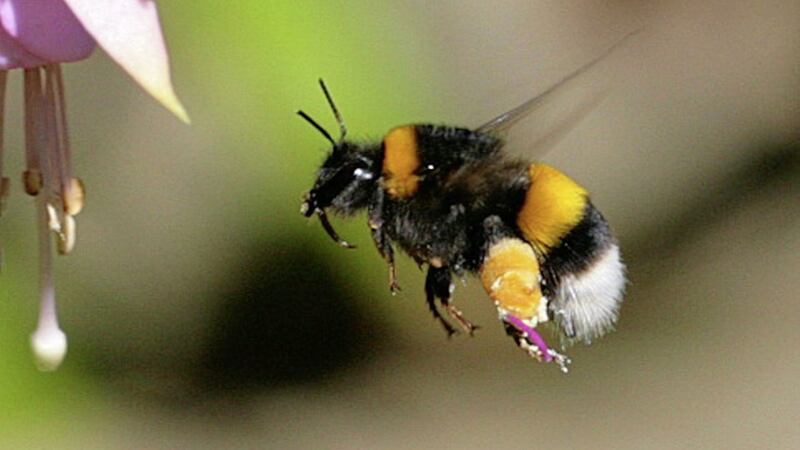AT THIS time of peak patriotism, it would nice to think people’s sense of Irishness could extend beyond the clichés of shamrock, Guinness and fiddly-dee to something arguably more worthwhile, like the island’s insects.
As another spring dawns, we are once again confronted with some worrying statistics about Ireland’s butterflies, bumblebees and other invertebrates, whose populations, in line with a global trend, are collapsing.
A scientific review of insect numbers published last month suggests that 40 per cent of species are undergoing "dramatic rates of decline" around the world.
The study says that bees, ants and beetles are disappearing eight times faster than mammals, birds or reptiles. However, researchers say that some species, such as houseflies and cockroaches, are likely to boom.
The Republic’s National Biodiversity Data Centre (NBDC) confirmed that such trends are evident in Ireland, as is the forecast threat of "catastrophic collapse of nature's ecosystems".
Ireland’s 14,500 species of insect represent one third of all species found on land or around our shores.
Over the past decade or so NBDC has been monitoring insect numbers with help from citizen scientists. The centre’s senior ecologist Dr Tomás Murray said across more than 100 monitoring sites, butterfly numbers had declined by 2.6 per cent over a 10-year period.
The pace of decline among bumblebees is greater still, he said, and far outstrips the rate of global deterioration.
"Whenever we release these figures we commonly get people responding saying 'but there's loads in my garden', and that may be true for that lucky person in their one garden but across over 220 sites now walked for bumblebees and butterflies all over Ireland, this is certainly not the case," he told The Irish Times.
The reasons for the rapid decline include changes in land and water use and management, pollution, overexploitation and over harvesting, and climate change.
Clearly a significant shift in agricultural practices is required to help safeguard our insect population but there’s a few things gardeners can do to help arrest these trends.
Arguably, the first thing the budding insect-friendly gardener needs to do is to eschew the prevailing notion that neatness and tidiness are sacrosanct. To most gardeners neglect is anathema; it goes against our green-fingered instincts to contain and control nature for our own pleasure. Yet, in summer at least, the neglected garden boasts a beauty all of its own. Giving over areas of your garden to nettles, ragwort, brambles and even bindweed will enhance biodiversity and improve its natural balance.
These weeds boost your insect and bird population, leading to fewer pests. But please note, in the parts of my own garden where the above weeds are permitted to prosper, I do my utmost to stop them seeding by breaking off and binning the ripe flowerheads where possible.
Obviously, this method of control lessens the area’s appeal to wildlife later in the season, but it ensures I won’t be overrun in subsequent years. Even if you choose not to have dedicated wild areas, by simply growing a variety of trees, shrubs and flowers, you are helping many species survive.
If you want to help bees in particular the best thing to do is to plant some native flowers. The favoured plants for bees are often those with white, blue or yellow flowers because bees can see these colours – as well as ultraviolet. Some non-native flowers that are particularly good include sunflowers, sedum, sweet pea, viburnum and lavender.
But as well as a source of food, bees also need somewhere to build a nest. There are a number of different boxes available from internet sources – or you could build your own bug hotel.








